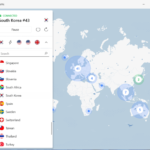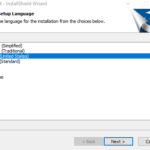You find your PC slows down with a lot of applications/programs running, hence you want to close a few of them using Task Manager. However, when trying to open Task Manager, you’re faced with a blank window showing “Task Manager (Not Responding)”. In this tutorial, learn how to fix the Task Manager not responding/opening problem.
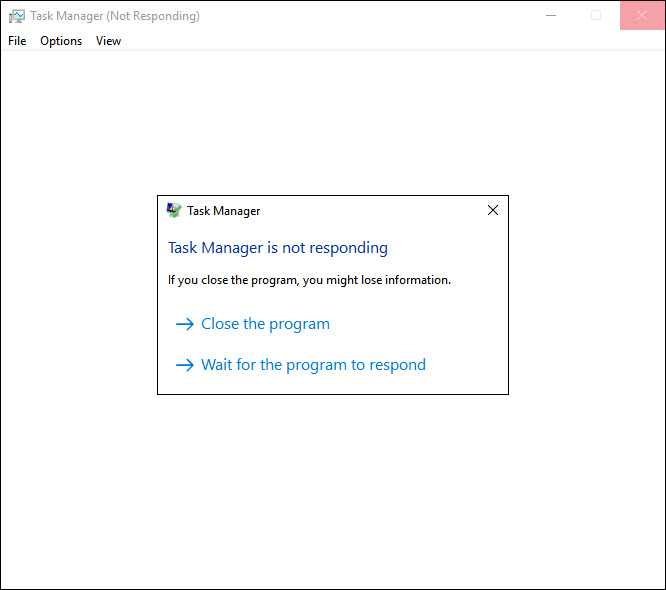
Task Manager (Not Responding)
Task Manager, previously known as Windows Task Manager, is a system monitor program that provides information about computer performance and running software, including the name of running processes, CPU load, commit charge, I/O details, logged-in users, and Windows services. Task Manager can also be used to set process priorities, processor affinity, st
Here are a few tips on how you can access your task manager.
– Press Ctrl + Shift + Esc.
– Press Ctrl + Alt + Delete and select the Task Manager option.
– Right-click the taskbar and select the Task Manager option.
– Run “taskmgr” from the Run Box or Start Menu
– For Windows 8/8.1 or Windows 10: right-click on the Start button and select Task Manager.
If so far Task Manager on your PC not opening or not respond, you can try the methods below to troubleshoot the issue.
How To Fix Task Manager Not Responding in Windows 10/8/7
Method 1. Make sure that Task Manager isn’t disabled
1. Press Windows Key + R and enter regedit. Click OK to open Registry Editor.

2. Go to:
Computer\HKEY_CURRENT_USER\Software\Microsoft\Windows\CurrentVersion\Policies\System
Note: If the System key isn’t available, right-click the Policies key and select New > Key. Now put System as the name of the new key.
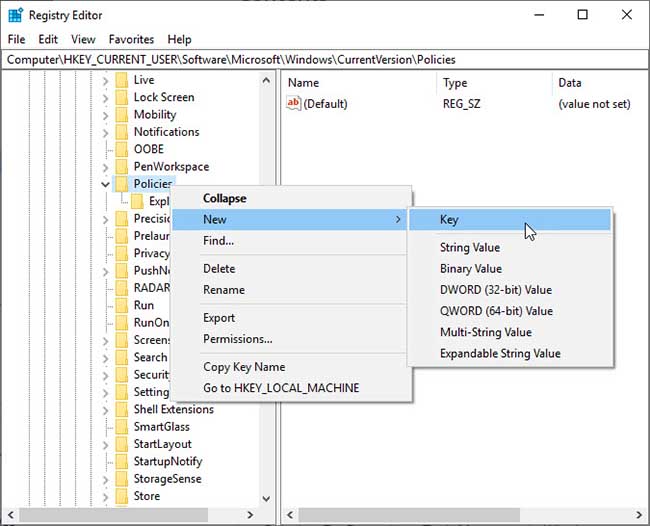
3. Go to the System key, find DisableTaskmgr. If this value isn’t available, right-click the right pane and select New > DWORD (32-bit) Value. Put DisableTaskmgr as the name of the new DWORD. Set Value data to 0.
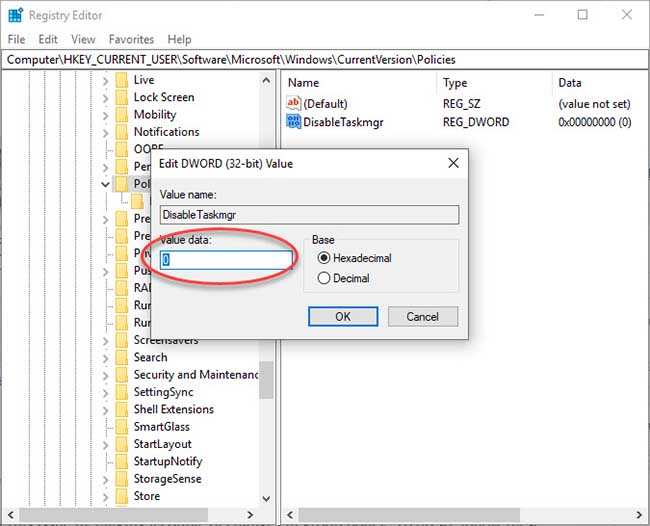
4. Restart your Windows.
Method 2. Enabling Task Manager using the Group Policy Editor
if the Task Manager is disabled by your group policy, Task Manager will not working. So you might be able to fix this issue by making a couple of changes in group policy. To do so, follow these steps:
1. Press Windows Key + R and put gpedit.msc. Press Enter or click OK.
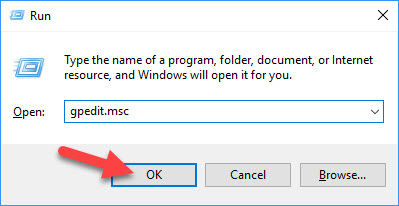
You can refer how to fix “Windows cannot find gpedit.msc” in Windows 10 from this tutorial.
2. Go to:
User Configuration>Administrative Templates>System>Ctrl+Alt+Del Options
3. In the right pane, find Remove Task Manager. Double-click it to open its settings.
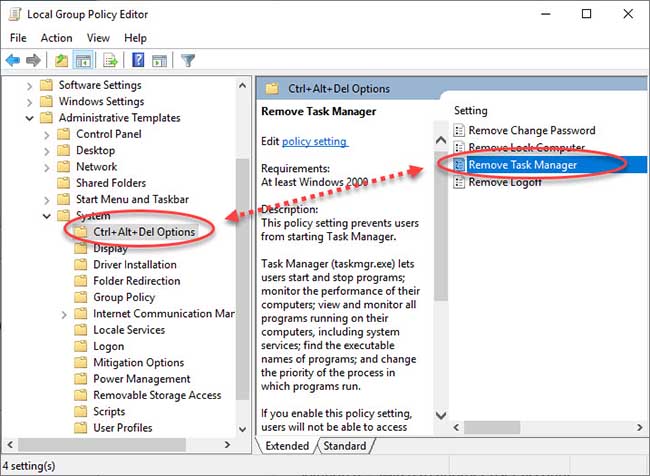
4. Select Not Configured or Disabled. And then click Apply > OK.
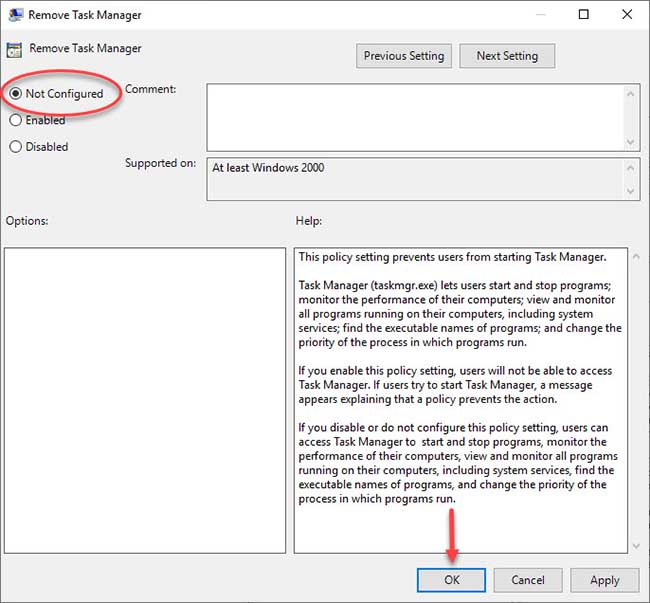
Method 3. Re-register Task Manager
1. Click Start menu and type “Powershell“. Then right-click on Windows PowerShell in the result and select Run as administrator.
2. In the Powershell window, Copy-paste or typer the following codes and press Enter:
Get-AppXPackage -AllUsers | Foreach {Add-AppxPackage -DisableDevelopmentMode -Register “$($_.InstallLocation)\AppXManifest.xml”}
3. Close Windows PowerShell window.
4. Go to File Explorer by pressing Windows Key + E.
5. Navigate to the View tab, make sure the Hidden items box is checked in order to view hidden items.
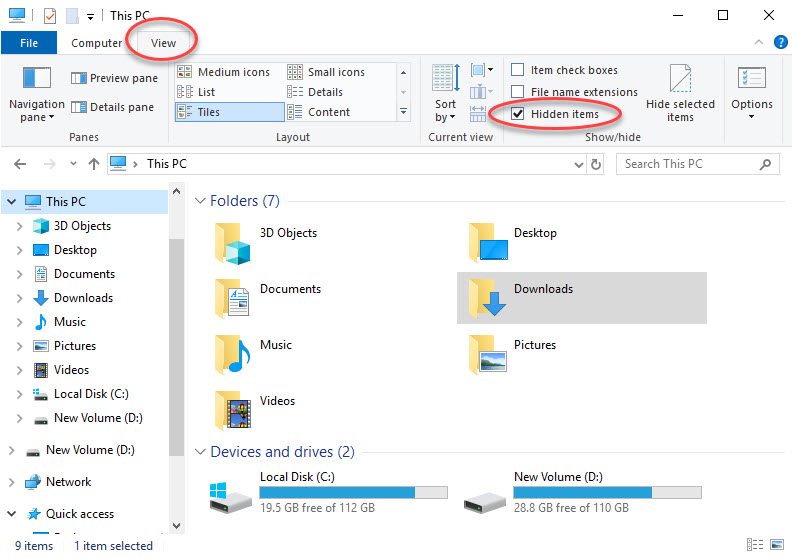
6. Navigate to:
This PC > Local Disk (C:) > Users > name > AppData > Local
7. Find and delete the TileDataLayer folder.
8.Restart your PC.
VIDEO TUTORIAL:
Method 4. Switch to another user account
Method 5. Check for Windows update
Read more:
How To Fix Windows Task Manager Tabs Not Showing


